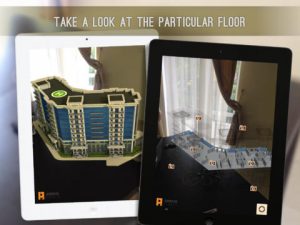These Industries Can Benefit From Augmented Reality
Pokémon GO has introduced millions to the concept of augmented reality (AR), but its potential goes far beyond catching digital monsters on your smartphone. In addition to video games, AR has many practical real-world applications.
Here is a look at what AR is and which industries can benefit from the technology.
What Is Augmented Reality?

Put simply, augmented reality is the process of overlaying digital images or data on top of real-life physical environments.
If you think about the way virtual reality places you in an entirely computer-generated environment, AR stops one step short of that. With AR, digital and computer-generated elements interact with the real physical environment around you.
These days, the most common way to experience AR is with smartphone apps that overlay digital elements on top of the world around you as they are viewed through your phone’s camera. Before long, however, AR-enabled headsets and goggles such as Microsoft’s HoloLens will hit the market.
It’s certainly a boon for gaming, but here are five other industries that will benefit from AR technology in the near future as well:
1. Real Estate
Real estate agents should be all over AR. The technology allows them to showcase properties to potential buyers without being inside the actual home itself.
For example, a potential homebuyer visiting a real estate agent could use a phone or tablet to browse and “walk through” homes, using the device as a sort of window into the property.
Nothing beats seeing a property first-hand, but AR could immediately cut through the clutter and help buyers quickly narrow their search to only properties they would actually consider.
2. Architecture
There are two ways AR can enhance the world of architecture.
First, floor plans can be brought to life in 3D using an augmented reality app on a smartphone, tablet or headset. Just by pointing the device at a set of plans, users can view a virtual 3D model of the project.
Additionally, AR could be used on-site at architecture projects. For example, if a project is just a quarter or halfway done, architects could use AR to show clients and other interested parties what the project will look like when it’s completed.
3. Healthcare
There are a number of ways the healthcare industry can use AR as well.
One way is to use the technology when marketing prescription drugs to patients or healthcare decision makers. Patients could use an AR device to scan a variety of drugs, with each giving a full description, instructions and other guidelines for that specific drug.
AR could also be used in medical education, giving students an idea of how a procedure or model should look.
Yet another use for AR in the healthcare field is prototyping for packaging and medical supplies. This could save significant amounts of time and money versus the old-school method of creating and constantly recreating prototypes.
4. Energy
The energy and electrical industries have a variety of applications for AR, including safety education, training, and maintenance as well as modeling and configuration.
In another example that would save power companies time and money, workers in the field could use AR to reveal the locations of existing power lines and other potential dangers without having to physically dig.
Refineries, utility companies, manufacturing facilities, and universities can also use AR to help maintain medium voltage circuit boards, making maintenance and repair a breeze.
5. Education
It would appear that the uses for AR in education are just about endless, considering technology can help students through the learning process in almost any subject.
At zoos or museums, for example, AR could be used as a virtual tour guide, providing interesting information about each exhibit. More creatively, AR could bring museum objects such as artwork or dinosaur bones to life through AR devices.
There are plenty of applications for the classroom as well. AR could add life and color to otherwise boring textbooks and assignments, which could make students that much more eager to learn.
While virtual reality may get all of the press, augmented reality is likely to have a greater impact on the world as we know it because, by definition, it enhances the real physical world. Mobile gaming has helped educate consumers on just what AR is, but in the coming years, many industries will reap the rewards from the technology as well.




Hi Neat post There is a problem along with your website in internet explorer would test this IE still is the market chief and a good section of other folks will pass over your magnificent writing due to this problem